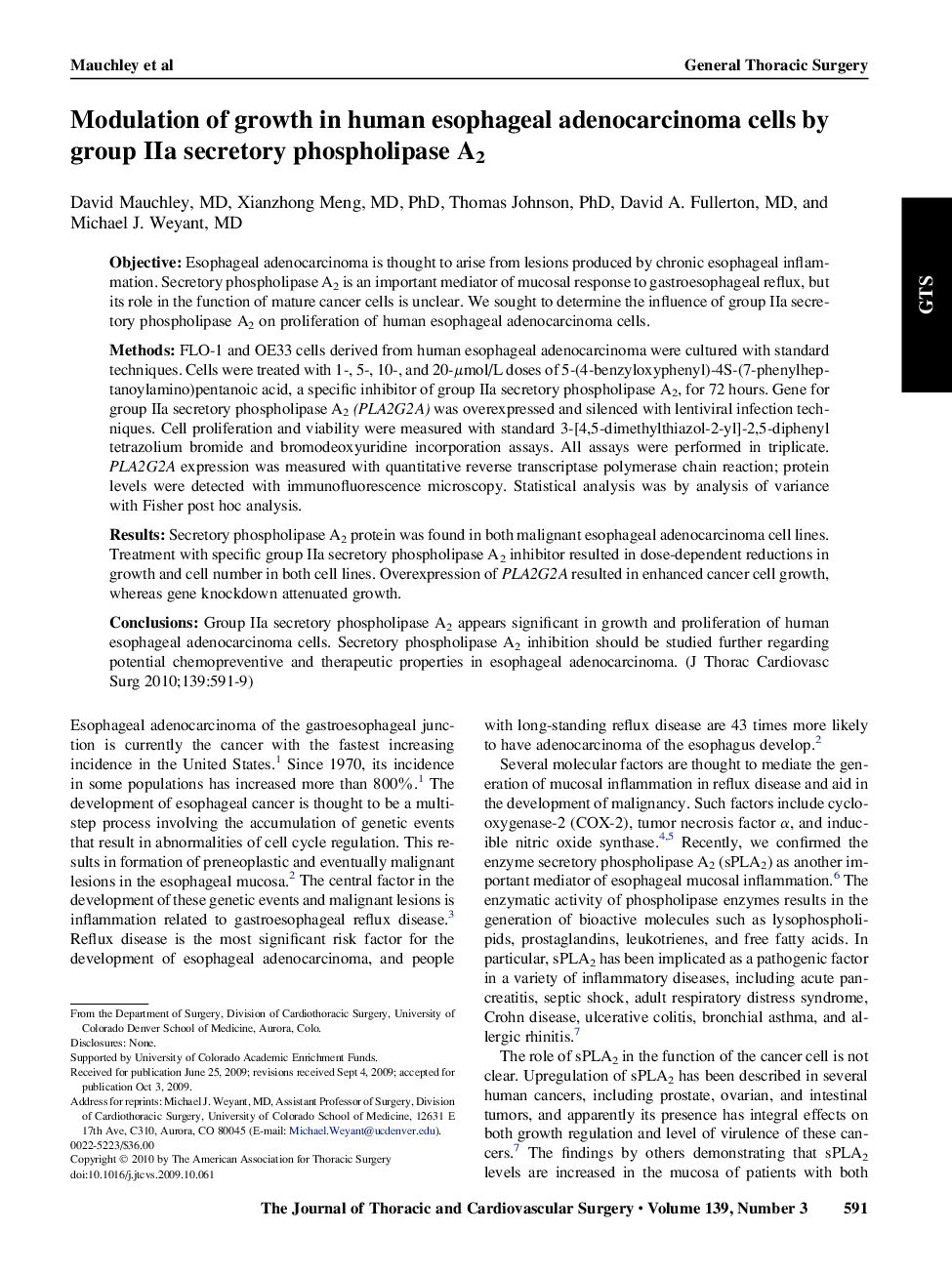| Article ID | Journal | Published Year | Pages | File Type |
|---|---|---|---|---|
| 2981756 | The Journal of Thoracic and Cardiovascular Surgery | 2010 | 9 Pages |
ObjectiveEsophageal adenocarcinoma is thought to arise from lesions produced by chronic esophageal inflammation. Secretory phospholipase A2 is an important mediator of mucosal response to gastroesophageal reflux, but its role in the function of mature cancer cells is unclear. We sought to determine the influence of group IIa secretory phospholipase A2 on proliferation of human esophageal adenocarcinoma cells.MethodsFLO-1 and OE33 cells derived from human esophageal adenocarcinoma were cultured with standard techniques. Cells were treated with 1-, 5-, 10-, and 20-μmol/L doses of 5-(4-benzyloxyphenyl)-4S-(7-phenylheptanoylamino)pentanoic acid, a specific inhibitor of group IIa secretory phospholipase A2, for 72 hours. Gene for group IIa secretory phospholipase A2(PLA2G2A) was overexpressed and silenced with lentiviral infection techniques. Cell proliferation and viability were measured with standard 3-[4,5-dimethylthiazol-2-yl]-2,5-diphenyl tetrazolium bromide and bromodeoxyuridine incorporation assays. All assays were performed in triplicate. PLA2G2A expression was measured with quantitative reverse transcriptase polymerase chain reaction; protein levels were detected with immunofluorescence microscopy. Statistical analysis was by analysis of variance with Fisher post hoc analysis.ResultsSecretory phospholipase A2 protein was found in both malignant esophageal adenocarcinoma cell lines. Treatment with specific group IIa secretory phospholipase A2 inhibitor resulted in dose-dependent reductions in growth and cell number in both cell lines. Overexpression of PLA2G2A resulted in enhanced cancer cell growth, whereas gene knockdown attenuated growth.ConclusionsGroup IIa secretory phospholipase A2 appears significant in growth and proliferation of human esophageal adenocarcinoma cells. Secretory phospholipase A2 inhibition should be studied further regarding potential chemopreventive and therapeutic properties in esophageal adenocarcinoma.
